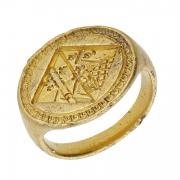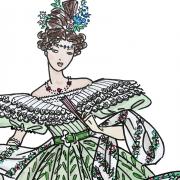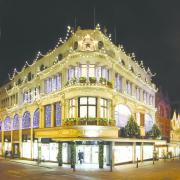Although the ancient Egyptians are sometimes credited with having invented the engagement ring, and the ancient Greeks with having adopted the tradition, the history of the engagement ring can only be reliably traced as far back as ancient Rome.
In many countries, engagement rings are placed on the finger nearest the little finger on the left hand. It was believed that this finger contained a vein (the vena amoris) that led to the heart.
The engagement ring was originally part of the dowry (the bride price), that symbolised ownership and purchase of the bride.
In the second century BC, the Roman bride-to-be was given two rings, a gold one which she wore in public, and one made of iron which she wore at home while attending to household duties. The gold ring was a mark of being free-born.
In the mid seventh century, the Visigothic Code required “that when the ceremony of betrothal has performed, . . . and the ring shall have been given or accepted as a pledge, although nothing may have been committed to writing, the promise shall, under no circumstances, be broken”.
At the Fourth Council of the Lateran in 1215, convoked by Pope Innocent III, the banns of marriage were instituted and a man gives his betrothed an engagement ring, prohibiting clandestine marriages and requiring that marriages be made public in advance. Some legal scholars have seen in this a parallel with the engagement ring tradition described by Pope Nicholas I in 860 AD. The first well-documented use of a diamond ring to signify engagement was by the Archduke Maximilian of Austria in the imperial court of Vienna in 1477, upon his betrothal to Mary of Burgundy. This then influenced those of higher social class and of significant wealth to give diamond rings to their loved ones.
Commercial diamonds were first found in South Africa in 1866. By 1872, the output of the diamond mines exceeded one million carats per year. As production increased, those of lesser means were able to join the trend of the notion.
In 1938, the diamond cartel De Beers began a marketing campaign that would have a major impact on engagement rings. By 1939, the first elements of this campaign was to educate the public about the four Cs (cut, carats, colour and clarity). In 1947 the slogan “A Diamond is Forever” was introduced. In the 21st century, it has become a common expectation that a diamond is the only acceptable stone for an engagement ring. The bride-to-be then is expected to permanently wear her ring as a means of showing her commitment to the forthcoming marriage.
For information about our range of diamond rings from 0.25ct to 7.6ct, contact James at the Gold Shop, Diss.



























